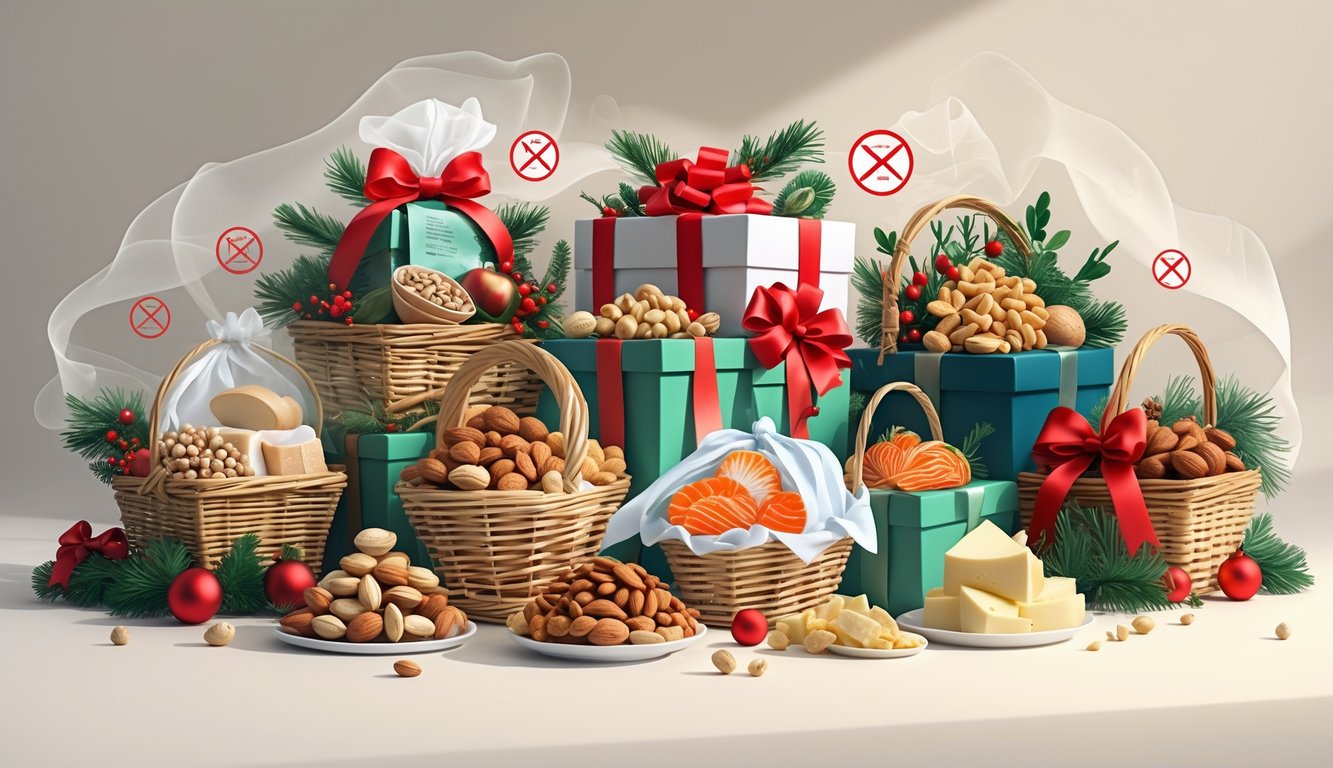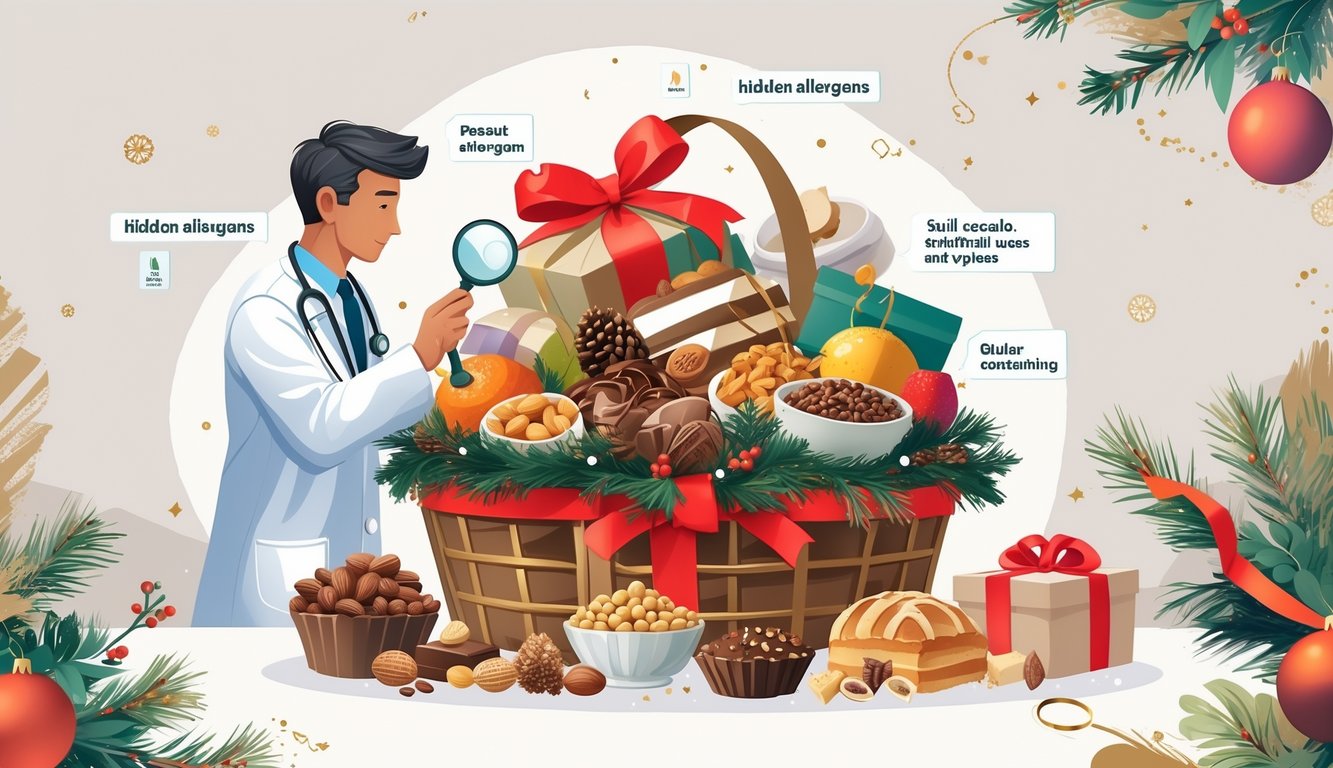
Gift baskets everywhere. Every office, every doorstep—those cellophane-wrapped, bow-topped mountains of “holiday cheer” that practically dare you to eat something you’ll regret. They look so innocent, right? Until someone’s nose explodes or the hives start. I swear, every year, there’s some story—last Christmas, a kid in my building wound up at urgent care because his aunt thought “gluten-free” meant “allergy-proof.” Nope. “Nut-free” doesn’t mean “made in a nut-free facility,” but try explaining that to a room full of sugared-up kids while the adults are busy with their third glass of mulled wine.
And then there’s the candles—why do people keep stuffing scented candles in with the cookies? It’s like, “Here, enjoy your shortbread and a migraine.” The American College of Allergy, Asthma and Immunology says even a sniff can set off sneezing or worse. I’ve seen it. My friend’s mom can’t even walk past a vanilla candle without wheezing. And those labels? Gone the second you rip open the plastic. “Allergy-friendly” claims on the box? I mean, sure, but I always call the number and grill whoever answers about every ingredient, and half the time they’re just reading off a script. Some curated allergy-friendly snack baskets are okay, but I still double-check. Maybe I’m paranoid, but I’ve seen too much.
Honestly, if ER doctors got paid every time someone said, “I didn’t know there was soy in that,” they could retire on gold-plated fruit baskets. The kind with mystery chocolate blobs and a “may contain tree nuts” sticker half-hidden under a bow. And don’t even try to argue with relatives convinced honey sticks are fine for babies. Sometimes I wish the FDA would just make “holiday basket” its own food group—require a warning label like cigarettes. “May cause anaphylaxis. Or family drama.”
Understanding Hidden Allergens in Holiday Gift Baskets

Picking a gift basket isn’t even the real challenge. It’s dodging the allergy landmines. I can’t count how many “safe” snacks have blindsided me or someone I know. Good intentions, bad outcomes.
Common Sources of Food Allergens
Peanut butter pretzel clusters. Nut brittles. I’ve lost track of how many times those sneak into “assorted” boxes. And chocolate? Don’t trust it—sometimes it’s hiding sesame oil or chopped nuts. FDA says labeling rules are strict, but cross-contamination warnings are basically a lottery ticket. Wheat, soy, eggs, milk, tree nuts, peanuts, fish, shellfish—they’re all lurking. You’d think shampoo and hand cream would be safe, but Banner Health’s blog says otherwise. “Read the ingredients” is the usual advice, but what if the allergen isn’t even listed? Good luck.
Popular Holiday Treats With Hidden Risks
Neighbor’s fancy pound cake—milk. Parisian macarons—almonds, egg whites, and probably a side of nut dust. Peppermint bark? Sometimes it’s got casein or whey under some science-y name. “Fruit and nut” baskets are the worst: chocolate-covered raisins sitting on top of trail mix. Imported jams? Some use fish-based thickeners. Seriously. And those cute little marzipan figures or rainbow sprinkles? Chemical nightmares for anyone allergic to dyes or preservatives. ACAAI says these big holiday boxes are way riskier than they look.
How Allergens Go Undetected
How do you even guess that “natural flavors” means “maybe shellfish” or that “spices” hides mustard? Ingredient lists keep getting smaller, fonts tinier. Factories churn out baskets on shared lines, so peanut dust or wheat sneaks in. I’ve called companies and half the time they just say, “We can’t guarantee anything.” At least they’re honest, I guess. And apparently, real Christmas trees shed mold spores that trigger allergies if the food sits near them—Top Doctors mention it, but no one ever thinks about that. Maybe we need home allergen test kits for every basket.
Gift Basket Components Doctors Warn Against

Same stuff every year: nuts under the tinsel, crumbly cookies, shiny candies you eat before breakfast. Cute, but those baskets are basically allergy roulette.
Tree Nuts and Nut-Based Snacks
Pecans, walnuts, cashews, hazelnuts—fancy packaging doesn’t make them less risky. Dr. Smith in the ER told me he saw six nut allergy cases in two weeks after Christmas, all from “just a taste” of something in a gift basket. One ended with an EpiPen. Multiply that by how many kids have nut allergies in the U.S.—no wonder doctors are on edge. And for older folks, reactions can be even more unpredictable. But every year, baskets are stuffed with trail mix, almond roca, “artisan nut medleys.” Labels are tiny or missing. “May contain peanuts” doesn’t mean tree nuts aren’t there.
And those DIY baskets from school fundraisers? They’re even riskier. Gloves don’t get changed, everything touches everything else. Nut dust everywhere, even in the “plain” dried fruit.
Cookies and Baked Goods
Bakeries crank out assorted cookies—linzers, biscotti, “European” shortbread with mystery fillings. Ingredients blur, especially with mass-produced stuff. Nut flour sneaks in all the time. Dr. Patel once said, “Read every label, then doubt it anyway.” FDA recalls in 2024 flagged cookies for undeclared nuts. Not rare. These things come off shared equipment. My neighbor’s kid landed in urgent care after eating a “plain” chocolate chip cookie—turns out it had almond extract listed as “natural flavor.”
It’s not just nuts—eggs, dairy, soy can all hide behind “flour blend.” One bite and you’re playing allergy roulette. Homemade treats? Forget it unless you saw the recipe. No label, no trust.
Candy and Chocolates
Holiday chocolate? Total chaos. “Hazelnut truffles,” “macadamia caramels”—these are cross-contact nightmares. FDA stats from 2023 say chocolate candies are a top cause of reactions, especially with the “processed in a facility with nuts” disclaimer buried somewhere. Ever open a candy box and wonder what’s in each piece? I called customer service once and they had no clue which truffle was which. Dr. Nguyen says manufacturers swap fillings all the time, so the ingredient list could be months old—especially with imports. That’s how “plain” chocolates end up with surprise nuts.
Even “nut-free” candies can be risky if they’re made in high-allergen factories. Old-school hard candies in bulk bins? Cross-contact central. There are safer options, but most baskets don’t bother. Want to see how bad it gets? Check the FDA’s recall database. It’s wild.